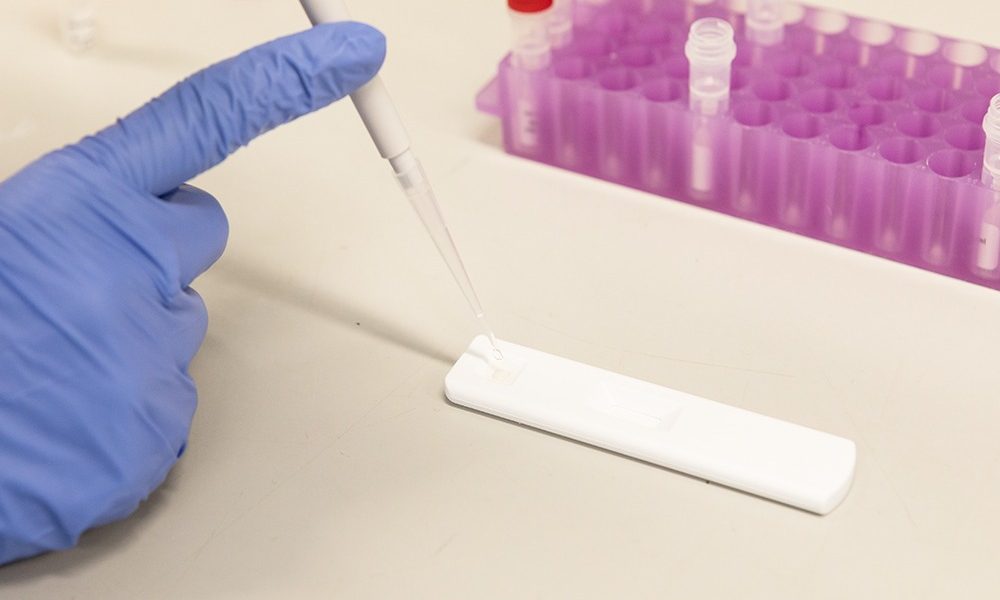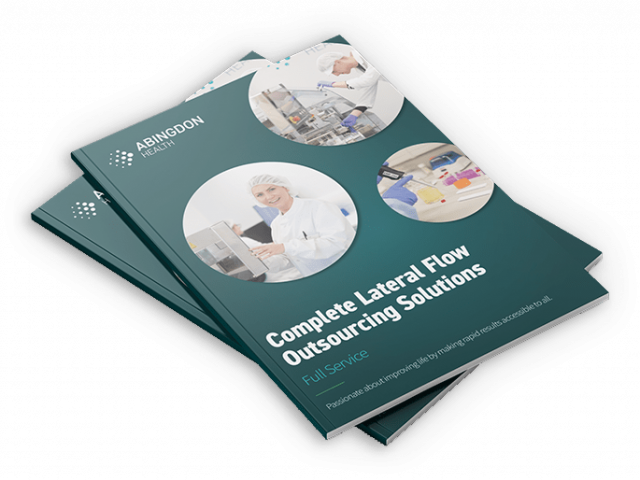Clinical Trials with Lateral Flow Tests: Key Considerations

What Is A Clinical Trial and Why Is It Important?
Consider The Regulatory Pathway At The Outset Of The Project
Types Of Clinical Trials
One Size Doesn’t Fit All
What Are The Key Outputs Of A Pivotal Clinical Trial?
Your Product Needs To Be Fully Designed Before A Pivotal Clinical Trial Can Take Place
Key Takeaways
The use of lateral flow diagnostics technology is expanding rapidly and we are seeing an increase in the use of lateral flow testing in clinical applications.
This is driven by the benefits of lateral flow test (LFT) technology – such as its cost-effectiveness and ease-of-use – and also due to the reduced barriers to adoption of LFT technology, following widespread use of rapid testing during COVID-19, with most now familiar with how a lateral flow test works.
The expansion of lateral flow testing into the clinical market requires consideration at an early stage of the regulatory strategy; and, importantly as part of this, the requirement for clinical trials.
In this blog, Abingdon Health’s Head of Regulatory Affairs & Quality Assurance (QARA), Candice Vendettuoli, provides an overview of the clinical trials process in the context of lateral flow and some key considerations. Abingdon Health provides a clinical trial service and can manage your regulatory approach and clinical trials. For further information please contact a member of our team to discuss your project needs in confidence.
What Is A Clinical Trial and Why Is It Important?
Clinical trials are an important part of the development pathway of any medical device or in-vitro diagnostics (IVDs) and are often required by regulatory bodies prior to placing devices on the market.
A clinical trial is a systematic assessment of a device’s safety and/or efficacy that uses human participants. Such trials may be an essential requirement for regulatory approval of medical devices or IVDs, but also importantly even in other areas such as animal health, plant or environmental testing.
A clinical trial can provide critical information to support a product in the market and give customers confidence that the product is “fit for purpose”.
Whilst clinical trials are a much-needed part of the process required to meet regulatory requirements for the medical device or IVD that is under development, trials themselves are heavily regulated in their own right.
Here in the UK, Clinical Trials are regulated by the Medicines and Healthcare Products Regulatory Agency (MHRA). In addition, a clinical trial in the UK generally requires ethics approval. Over in the USA, a clinical trial generally must receive an Investigational Device Exemption (IDE) from the U.S. Food & Drug Administration (FDA) and approval from an Institutional Review Board (IRB).
Consider The Regulatory Pathway At The Outset Of The Project
Clinical trials take time to plan and execute and, therefore, starting the planning process early is essential.
At the start of any clinical development programme we recommend our customers undertake a Regulatory Approach Plan. This is a service Abingdon provides and it will look at the specific territories the product is planned to be launched in, and will map out the specific regulatory requirements. For example, one key element is to ensure that, if possible, any analytical testing and clinical trial work planned covers all the requirements for the territories being targeted to avoid costly duplication of activities further down the line. There may be guidance available in terms of clinical trial design (e.g., number of samples / locations) and these should be reviewed in detail as part of the planning process. Also consider entering into a dialogue with regulatory bodies should be considered, if possible, to further refine your plans. For example, in the USA, the FDA provides guidance on its website on the preparation of clinical trials for medical devices and you can also enter into a pre-submission process with the FDA to garner further information to support the building of a robust Regulatory Approach Plan and clinical trial set-up.
Types of Clinical Trials
There are several types of clinical trials that can be conducted, dependent on the stage of your product.
Pilot studies are conducted in the pre-market phase of development. Pilot studies are not always required and this is dependent on the device and regulatory pathway taken. These studies are conducted in later stages of design and development prior to design freeze. These studies are generally small in nature and include the first in-human samples with the intention of providing preliminary information on device functionality and safety.
Pivotal studies are also conducted in the pre-market phase and are conducted on a much larger scale than pilot studies. Pivotal studies require the device to have passed design freeze and the study is used to generate evidence of the safety and effectiveness of the device under the specific intended use. These studies are generally the last studies conducted prior to regulatory body submission.
Once regulatory approval has been received, trials still may be needed beyond launch. Post Market studies can be required for a number of reasons, including confirming the immediate and long-term safety and effectiveness of the device.
One Size Doesn’t Fit All
Clinical trial requirements will vary according to, amongst other things:
i) what biomarker is being tested) ii) whether the application is point of care (i.e. performed by a healthcare professional) or self-testing (performed by the patient in the home, for example) and iii) whether there is any specific regulatory guidance in certain territories. Clinical trials will be built to align with the intended use and this will inform, inter alia, the location of the clinical trial sites, the protocol to be run and the key outputs required from the clinical trial. It is worth identifying clinical trial sites and entering into a dialogue early to ensure no delays to the process.
This planning should also inform your R&D activities. One critical element is to source “real-life” samples as soon as possible during the development process, so that you are able to test the actual sample that will be used in the intended use during the development process and by doing this you will optimise your lateral flow assay correctly and increase the chances of success of your clinical trial. Other elements include ensuring the ancillaries cover the intended use. For example, for finger prick lateral flow tests, there are recommendations (e.g. from the WHO) in terms of the size of lancets that should be used in different applications.
What Are The Key Outputs Of A Pivotal Clinical Trial?
It is also worth considering at an early-stage what outputs you are expecting from a pivotal clinical trial and it is essential to continue to review these throughout the development process.
Validating the accuracy of the test, in terms of sensitivity and specificity, is a fundamental element; but, it is also worth considering what other aspects will need to be covered. These may be other regulatory requirements, or recommendations from other bodies, or there may be elements that you want to include to support the product once launched, for example gathering information regarding user-experience. A clinical trial is a fantastic information-gathering exercise and should be considered in this broader context. It is also worth considering whether the information can be published. Peer-reviewed research publications can offer additional credibility and validity of a clinical trial and provide invaluable marketing data to support a product launch.
Your Product Needs To Be Fully Designed Before A Pivotal Clinical Trial Can Take Place
One critical aspect is planning the timing of the pivotal clinical trial.
This will occur post-design freeze in order to ensure that the “whole system” is tested during the clinical trial. For example, in a self-test, the user-experience needs to consider the overall testing experience from packaging, instructions for use, sample taking (e.g. using the chosen lancet and blood collector in the case of a finger prick test) through to taking the test and reading the result. Design freeze milestone occurs at the end of optimisation and this “freeze” should include locking in any processes, such as if the test result needs reading on a smartphone app or a reader.
Typically, the pivotal clinical trial may use products manufactured during the technical transfer phase of a project, where typically three batches of the product are manufactured at scale using the design-frozen design. As mentioned above, it is also possible to run smaller pilot clinical trials during optimisation which allow some initial information gathering on the product design which may allow amendment and modification prior to design freeze.
Key Takeaways
Clinical trials will normally run over multiple locations and test significant individuals. Planning is critical and will need to ensure appropriate training, risk assessment, robust data gathering and management. Ethics approval to run clinical trials is often required and this can take time to put in place, so it is important to start this process well in advance of the intended clinical trial date.
The good news is that expert support is available. Abingdon Health’s in-house regulatory team can manage all or parts of the regulatory and clinical trial process to ensure your product introduction or re-certification is as smooth as possible. Contact a member of our team to discuss your project needs in more detail and to find out more about how we can help.

